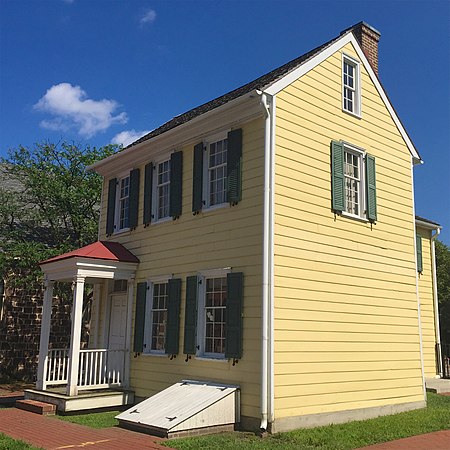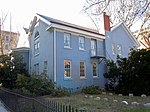Douglass House (Trenton, New Jersey)

The Douglass House is a historic house currently located at the corner of Front and Montgomery Streets in the Mill Hill neighborhood of the city Trenton in Mercer County, New Jersey. It served as George Washington's headquarters prior to the Battle of Princeton on January 3, 1777. Listed as the Bright–Douglass House, it was documented by the Historic American Buildings Survey in 1936, when the house was located in Mahlon Stacy Park near the Delaware River. It was added to the National Register of Historic Places on December 18, 1970, for its significance in architecture, military and social history. It was added as a contributing property to the Mill Hill Historic District on December 12, 1977.
Excerpt from the Wikipedia article Douglass House (Trenton, New Jersey) (License: CC BY-SA 3.0, Authors, Images).Douglass House (Trenton, New Jersey)
East Front Street, Trenton
Geographical coordinates (GPS) Address Nearby Places Show on map
Geographical coordinates (GPS)
| Latitude | Longitude |
|---|---|
| N 40.218916666667 ° | E -74.761722222222 ° |
Address
Douglass House
East Front Street 165
08608 Trenton
New Jersey, United States
Open on Google Maps









